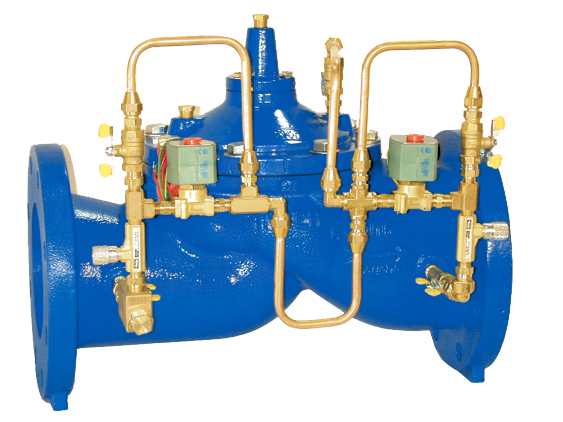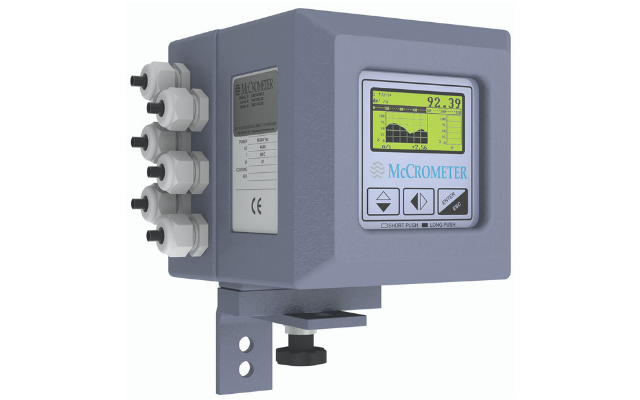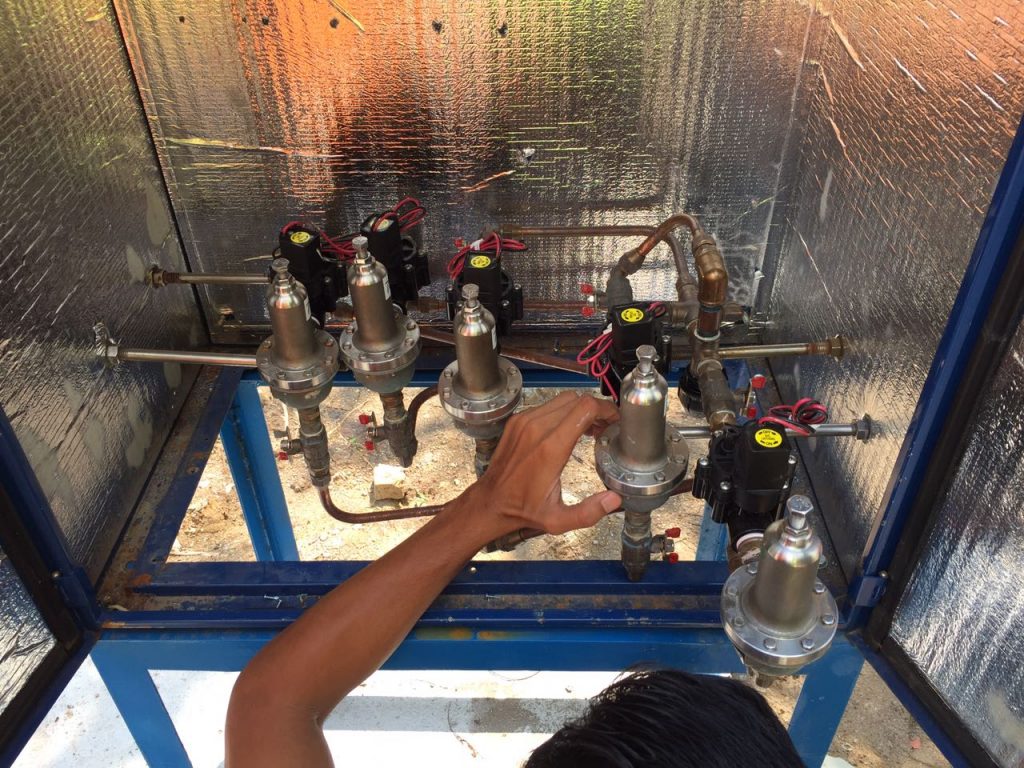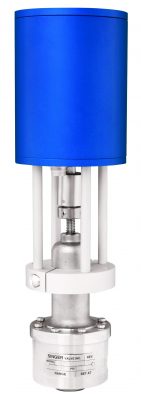Adding electronic instrumentation and automation to a water management system can provide enormous benefits, but it can seem daunting when first moving from a purely hydraulic system. While there are many instrumentation and automation options available, an electronic control system does not have to be overly complicated. Control valves are a natural place to start since they already perform much of the control in water management. For those considering instrumentation and automation for their valves, but unsure of where to start, here are some simple suggestions that can have a large impact.
I don’t have any electronics – where do I start?
A good first step into the world of electronics is on the instrumentation side: add sensors to monitor pressures, flow rates, tank levels, valve positions and other parameters throughout your system. Sensors provide valuable feedback that enables operators and engineers to monitor sites and gain a deeper understanding of their system’s performance. Even when control is accomplished by hydraulic and mechanical means, having sensor feedback is critical to setting up that control effectively. For example, a flowmeter can give data valuable to setting up a PRV chamber and ensuring equal flow across multiple lines. Electronic instrumentation has become increasingly common in many parts of the industry as a fundamental piece of water systems and it is worth incorporating if it is not already.
I’m interested in electronic automation, but I don’t want to abandon reliable mechanical methods – what options do I have?
When first adding electronic automation, it can be easier to use products that work with existing mechanical components rather than to replace them completely. There are a number of products that enhance valve control by adding the ability to change setpoints or actuate valves electronically. These methods retain the original mechanical control mechanism, but remove the need to send personnel into the field to adjust a pilot screw when a pressure needs to be adjusted.
Battery-Operated Latching Solenoids
Battery-Operated Latching Solenoids that can be paired with a programmable timer are solenoid valves that do not need constant power to hold a position but instead switch position when they receive a pulse of power. They are ideal for low power applications in remote locations which need pressure modulation setpoint changes.
Latching Solenoids are commonly used to address the need in water distribution systems for pressure regulation to two setpoints at varying times throughout the day. Lowering system pressure during off-peak hours reduces pipe wear and breakage and lowers costs in maintenance and water loss. A latching solenoid on a control valve can switch between high and low pressure pilots at preset times, removing the need for manual setpoint adjustment, but retaining mechanical pilot control.
Pilot actuators fit over a pilot and turn the setpoint adjusting screw in response to a control signal. They are not limited to a few pre-chosen setpoints, but instead can adjust the pilot to any setpoint in its range. This makes them a good addition to control valves in applications that need multiple setpoints.
Pilot actuators are ideal for adding electronic automation to an existing valve because they are easy to retrofit and simple to control. Since the mechanical pilot is doing the actual modulation, the actuator does not require a complicated control algorithm. Instead, operators just send the desired 4-20mA setpoint signal from a control panel, SCADA system, or signal generator. The actuator then adjusts the pilot setpoint and the pilot continues to control the valve as usual.
Valve actuators are used for butterfly valves, ball valves, and other direct acting valves. They work similarly to pilot actuators, except that they are mounted on the main valve rather than on a pilot. These actuators can typically be controlled with a 4-20mA signal. However, valve actuators require a control algorithm and can have complex behavior in modulating applications, making them a bit more difficult to control. These actuators can be retrofitted onto existing valves and are ideal for adding electronic automation to butterfly valves and ball valves.
What if I want more control and flexibility?
To get the full potential of electronic automation, consider full electronic control. For diaphragm valves, that means solenoid pilot systems. The main valve is still operated hydraulically via the diaphragm; however, the mechanical pilots are replaced with electronic solenoid pilots. For modulating control, a two-solenoid pilot system is used. A two-solenoid control valve, sometimes called a “double clicker”, works by having the solenoids pulse on and off at varying lengths to control the flow of water entering or leaving the valve bonnet, similar to how a mechanical pilot throttles the bonnet flow to modulate the valve. The pulse lengths are determined by a control algorithm to smoothly and accurately bring the valve to its setpoint.
 Dealing with control algorithms can be one of the most daunting aspects of adding electronic automation. However, manufacturers who offer electronic control valves often also offer control panels pre-programmed with algorithms tailored to control their valves. These kinds of ready-made, plug-and-play options greatly simplify the switch to electronic automation and make it easy for operators and engineers to adapt to. A panel like the SCP-TP (as seen below) allows both local and remote setpoints, data logging, signal retransmission, alarm notifications, and SCADA communication. It also allows valve control speed and accuracy to be adjusted through the panel. These panels can be connected to SCADA for remote control or act as standalone units. For applications with multiple processes or custom requirements, custom panels like Singer’s MCP-TP are a good option. Custom panels require more communication to design to your needs, but ultimately, they are only as complicated as your requirements.
Dealing with control algorithms can be one of the most daunting aspects of adding electronic automation. However, manufacturers who offer electronic control valves often also offer control panels pre-programmed with algorithms tailored to control their valves. These kinds of ready-made, plug-and-play options greatly simplify the switch to electronic automation and make it easy for operators and engineers to adapt to. A panel like the SCP-TP (as seen below) allows both local and remote setpoints, data logging, signal retransmission, alarm notifications, and SCADA communication. It also allows valve control speed and accuracy to be adjusted through the panel. These panels can be connected to SCADA for remote control or act as standalone units. For applications with multiple processes or custom requirements, custom panels like Singer’s MCP-TP are a good option. Custom panels require more communication to design to your needs, but ultimately, they are only as complicated as your requirements.
 I’m still unsure of what I need…
I’m still unsure of what I need…
When in doubt, ask questions. Valve manufacturers and their local representatives are usually happy to help in determining the best fit for a given application. Talking to others who have already implemented electronic automation in their systems can also be helpful for seeing what is possible. Also, be sure to know what you want your valve to do and what benefits you want to see from adding electronics. Knowing what you want, seeing what others have done and talking to the experts will get you on the right track to bringing electronic automation to your valves.
Key Terms
Solenoid Valve – An electronic on/off valve driven by an electro-magnet. Solenoids are often used in valve pilot systems for electronic control and can be 2-way, 3-way, or 4-way, similar to ball valves. Solenoids usually hold one position (open or closed) when unpowered and the other when powered.
Actuator – Components that move other parts. Within the scope of electronic automation, actuators are generally electric motors that can be used to open/close a valve.
Sensor/Transmitter – “Sensor” and “Transmitter” are terms often used interchangeably for devices that measure characteristics of a system such as pressure, flow, level, or valve position, and produce an electric signal from that measurement.
SCADA – Supervisory Control And Data Acquisition (SCADA) is the overarching computer system that monitors and controls an entire plant or water distribution system, usually from a central control room.






